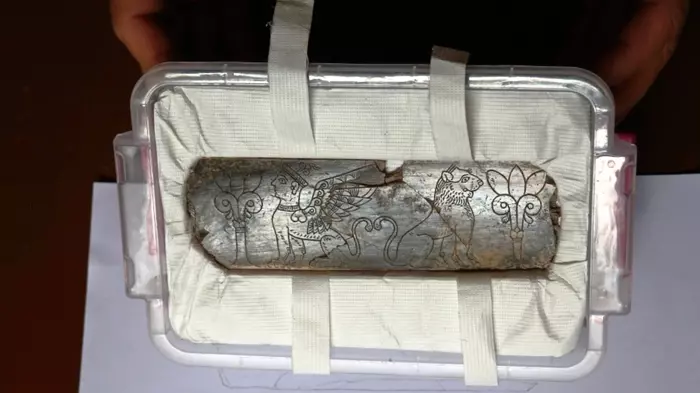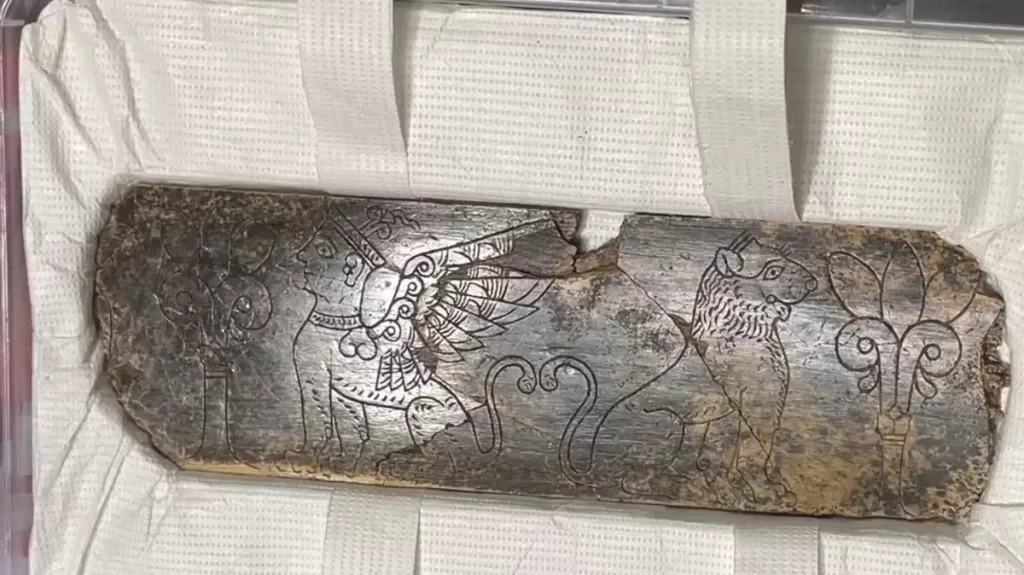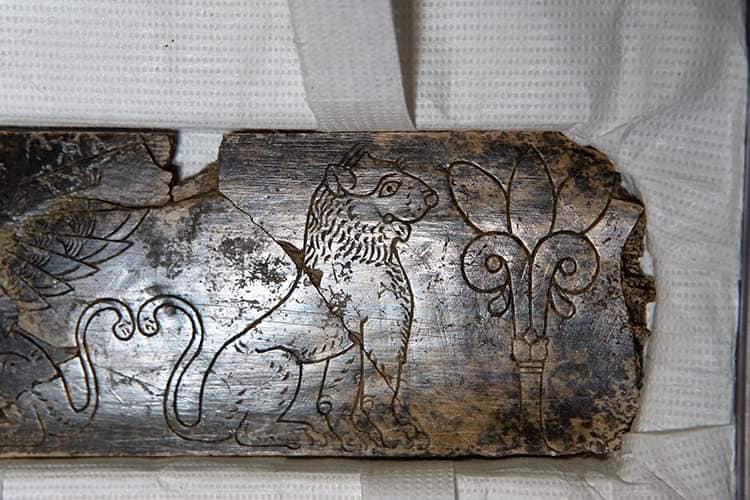
In the Hattusa excavations, a decoration piece made of 2,800-year-old elephant ivory was discovered
A decoration piece made of 2,800-year-old ivory was found during the ongoing excavations in Hattusa (today Boğazköy), the capital of the Hittites, who established the first central state organization in Anatolia.
The discovered elephant ivory decoration piece is approximately 30 centimeters in length and 10 centimeters in width. It features a sphinx (a sculpture with a human head and an animal body), a lion, and two tree of life figures drawn on a shiny surface.
Excavation Director Prof. Dr. Andreas Schachner told AA correspondent that the artifact was found in the Iron Age layer at the Hattusa Archaeological Site, which carries traces of many civilizations.
Schachner stated that the well-preserved piece is approximately 2,800 years old and was likely added as decoration to a wooden box or a piece of furniture made of wood during its original time. He mentioned, “The artifact is broken on the right and left sides, but the top and bottom parts are intact in their original state. Therefore, it is possible for us to estimate that it was originally longer.”
📣 Our WhatsApp channel is now LIVE! Stay up-to-date with the latest news and updates, just click here to follow us on WhatsApp and never miss a thing!!

Andreas Schachner explained the significance of the artifact as follows:
“This piece is a unique work for Boğazköy (Hattuşa). For the first time, we are faced with a piece adorned with such an intense and beautifully crafted scene. Extensive excavations have been conducted in Boğazköy during the Iron Age, but we haven’t encountered such a detailed piece. In terms of both the scene and the iconography (symbolism) and style used, it allows us to better understand the artistic relationships of Boğazköy during its own period, that is, in the first millennium BCE, towards Southeast Anatolia and towards Southwest, to Greece.”

Schachner emphasized that the artifact provides important clues about its own period, stating, “If there is such a piece, it is possible for us to say that this place is no longer a small town but perhaps a more significant, maybe a power center. Because, considering another discovery from previous years, we can say whether it points to a complex social structure or a hierarchical social structure. Slowly, we are gaining better information about the social statuses of that period.”
Schachner pointed out that the object has excited the excavation team, stating, “We are very happy and excited to have found this piece. For the first time, we are faced with an object that provides us with information about the art of that period. It is truly an important object.”
He added that after completing scientific studies, the artifact will be exhibited at the Boğazköy Museum.
Cover Photo: Kemal Ceylan/AA
You may also like
- A 1700-year-old statue of Pan unearthed during the excavations at Polyeuktos in İstanbul
- The granary was found in the ancient city of Sebaste, founded by the first Roman emperor Augustus
- Donalar Kale Kapı Rock Tomb or Donalar Rock Tomb
- Theater emerges as works continue in ancient city of Perinthos
- Urartian King Argishti’s bronze shield revealed the name of an unknown country
- The religious center of Lycia, the ancient city of Letoon
- Who were the Luwians?
- A new study brings a fresh perspective on the Anatolian origin of the Indo-European languages
- Perhaps the oldest thermal treatment center in the world, which has been in continuous use for 2000 years -Basilica Therma Roman Bath or King’s Daughter-
- The largest synagogue of the ancient world, located in the ancient city of Sardis, is being restored











Leave a Reply